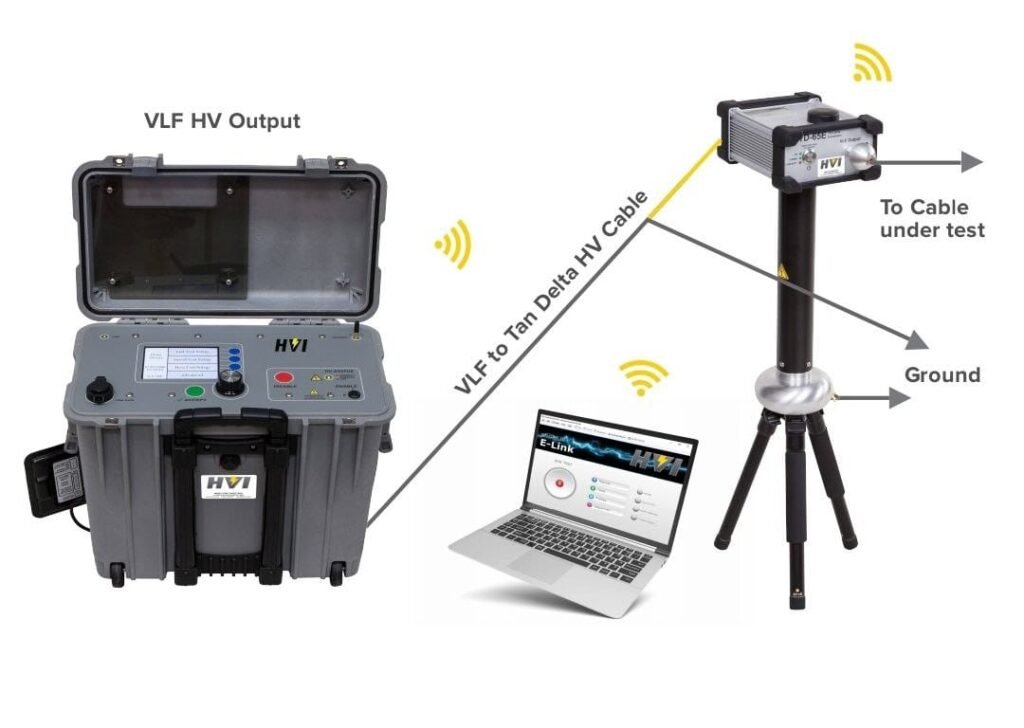Table of Contents
ToggleWhat is Tan Delta testing of Cable?
Tan Delta, also called Loss Angle or Dissipation Factor, is a diagnostic method of testing cables to determine the quality of the cable insulation. This is done to try to predict the remaining life expectancy and in order to prioritize scheduled maintenance, replacement, or rejuvenation of the cable system under test.
How does it work?
If the insulation of a cable is free from defects, like water trees, electrical trees, moisture and air pockets, etc., the cable approaches the properties of a perfect capacitor. It is very similar to a parallel plate capacitor with the conductor and the neutral being the two plates separated by the insulation material.
In a perfect capacitor, there is a phase shift between the current and voltage, where the current leads the voltage by 90 degrees and the current through the insulation is capacitive. If there are impurities in the insulation, like those mentioned above, the resistance of the insulation decreases, resulting in an increase in resistive current through the insulation.
It is no longer a perfect capacitor and the phase shift between the current and voltage will be less than 90 degrees. The extent to which the phase shift is less than 90 degrees is indicative of the level of insulation contamination, hence quality/reliability. This “Loss Angle” is measured and analyzed.
Below is a representation of a cable. The tangent of the angle δ is measured. This will indicate the level of resistance in the insulation. By measuring IR/IC, we can determine the condition of the cable insulation. In a perfect cable, the angle would be nearly zero.
An increasing angle indicates an increase in the resistive current through the insulation, meaning contamination. The greater the loss angle, the greater the degradation in the cable.


What is Water trees?
Water trees are small tree shaped channels found within the insulation of a cable, caused by the presence of moisture. They are very prevalent in service aged XLPE and other solid dielectric insulations, like PE and EPR type cables. These tree shaped moisture channels, in the presence of an electrical field, eventually lead to the inception of partial discharge (pd), which eventually leads to the formation of electrical trees, which grow to a point where insulation failure occurs. The tan delta test shows the extent of water tree damage in a cable.
Hardware necessary
The TD-65E tan delta transducer analyzes the voltage and current waveforms and calculates the tan delta number. A wirelessly connected laptop computer can be used to display and store the results. A voltage source is needed to energize the cable. In this case, a Very Low Frequency (VLF) AC Hipot. The VLF-34E pictured here is a 34 kV (peak) unit that is capable of testing from 0.5µƒ of cable load at 0.1 Hz, up to 5.0 µƒ at 0.01 Hz. VLF hipots are also widely used for testing newly installed and/or repaired cable before reenergizing to insure the cable is sound and for testing critical cable runs.
